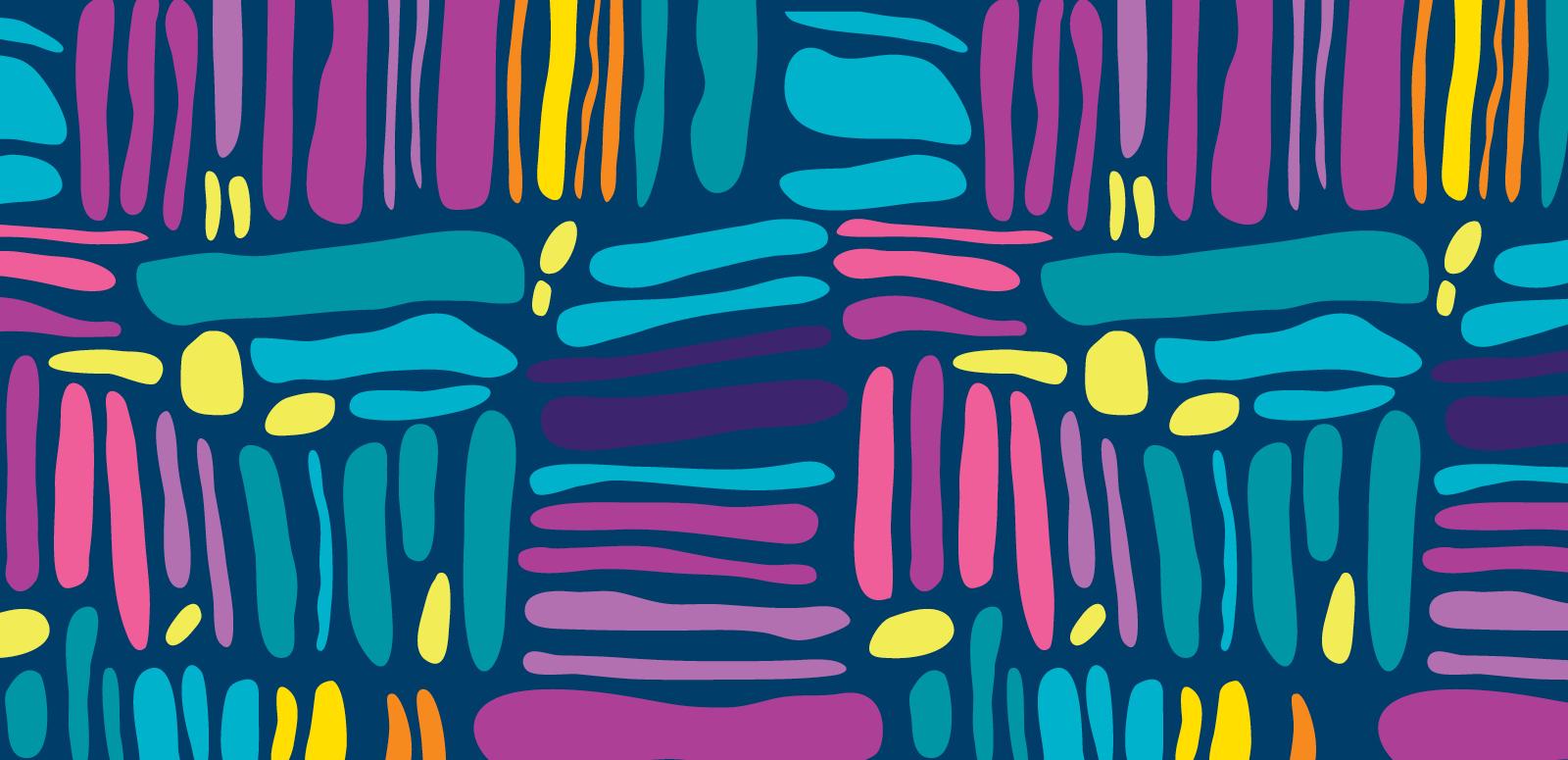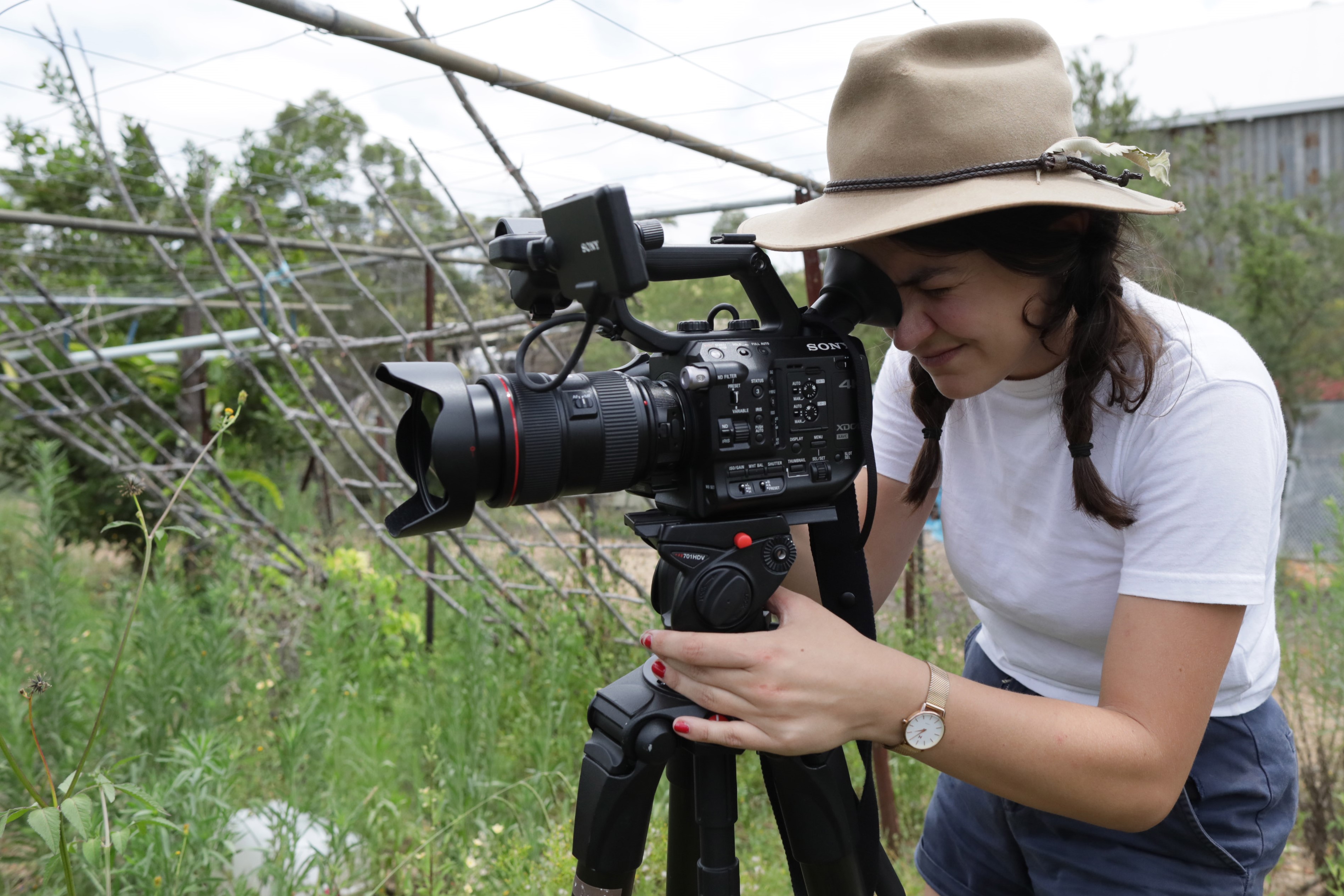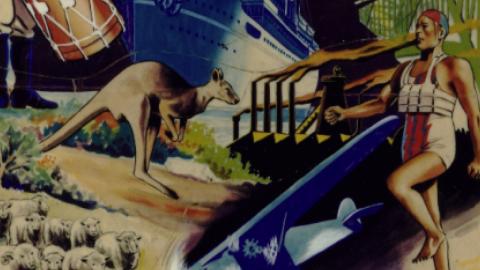

Australian icons, classics and the everyday of archive
WINHANGANHA: Australian Icons triptych by Jazz Money

Award-winning Wiradjuri artist, filmmaker and poet, Jazz Money, was awarded the NFSA RE/Vision commission in 2021. Since starting work on WINHANGANHA, the NFSA has supplied 240 titles and Jazz has reviewed a similar number of hours of digital footage from a vast spectrum of content.
Ranging from early Fanny Smith audio recordings through to contemporary television such as Preppers – and including feature films (The Sapphires), sports programs (Marngrook), music clips (Yothu Yindi), and animation (Little J & Big Cuz) – Jazz has viewed, selected and built their narrative from the voices in the audiovisual content held and preserved by the NFSA.
As part of their research and creative response to the digital collection, Jazz shares here their connection to, and reflection on, three pieces of content: the 1971 Nicolas Roeg feature film Walkabout, the Australian Tourist Commission's 1980s international campaign featuring Paul Hogan, and Australia’s first ‘adults only’ soap, Number 96.
Australian icons, classics and the everyday of archive: A triptych
BY JAZZ MONEY
Walkabout (1971)
where the violence of teenage softness swims gentle
under the lingering lens of aged camera and crew
and the gentleness of dinner becomes violence in contrast
the music swells to tell you that this is all beauty and wrongness
that these bodies one in proximity is taboo
and why it could be her body that the spear is aimed at next
in this glutton of killing and savage and innocence
it’s the nakedness of the body white and gliding
in that dark against dark against skin so dark
to recall the softness that is missing
where once the body swam brown and smooth in these waters
while skin pink and blistered under high sun marched through the death spilt land
and darkness of blood pooled in gully where whiteness now swims
caught in the eye of all that the camera can’t see
Australian Tourist Commission: The Hogan Series (1984–89)
How to craft a tourist campaign
1) start with icons
this is the 80s after-all
2) choose a face to represent a nation
start with Hogan
3) Hogan reckons you should learn some Australian
teaches 'g’day' and 'mate'
'put another shrimp on the barbie'
4) when pressed on cultural diversity
in the world’s biggest island
there is just one language
no linguistic variation
even the smiling outback has a white face in akubra to greet 'g’day'
5) sell the bodies as white
the sand as white
the coral as technicolour bygone
and the wilderness untamed
6) never mind cringe or insecurity or the tragic
Hogan as Lady of Liberty on Sydney Harbour Bridge
7) camera pans across a waterfall
a yidaki can be heard not seen
the tourists will recognise the didgeridoo 'other'
but cannot fear what they cannot see
8) Hogan to narrate
'when god created the world
he had a lot of weird and wonderful things left over
"what will I do with these" he thought
"I know, I’ll stick em all down under"'
do not mention the way this world was created
do not mention what is known of this place
always under never whole
do not mention what is missing and whose god this is not
9) the brown leather couch is brown enough skin
against Hogan’s manicured leather face
10) this is how we sell the curse of empire
this is how we hide the curse of conquest
11) Hogan to climb the rock
what’s another violation
in this mighty nation
12) finish with lobster
Barossa white
teach the violence as
lucky country
smooth the wrinkles with
'g’day'
Number 96 (1972–77)
Number 96 was a show on Australian TV long before I was born. It was big news then but I’d never heard of it until I came across some episodes while looking for onscreen Indigenous representation in the National Film and Sound Archive. It was a prime-time soap with the first episode billed as 'the night Australian television lost its virginity'.
From what I’ve watched of Number 96, the show wasn’t good. The performances are terrible. But the premise of a show set around the intersecting lives of an apartment block is tried and true.
Number 96 did lots of remarkable firsts for TV, both in Australia and globally. Number 96 had the first transgender actor playing a transgender character anywhere in the world with Carlotta as Robyn Ross. It also had the first ever recurring gay male character on television, Don Finlayson played by Lebanese Australian actor Joe Hasham. Don wasn’t even a deviant, he was a respectable lawyer and had a steady boyfriend! (Don’s second boyfriend was, however, a deviant).
Number 96 also had Australia’s first onscreen relationship – and kiss! – between an Indigenous and non-Indigenous person. That was in 1976. Another onscreen Blak/white kiss wouldn’t happen again on Aussie tellies for almost 20 years until Ernie Dingo and Our Cate in Heartland.
Representation is a fascinating thing.
Around episode 1,000 begins a sequence of events that is known as the ‘Hooded Rapist’ plot, where a masked man begins attacking the women in the apartment block of Number 96.
Of this recurring rapist's attacks there is one onscreen scene of violence.
In episode 1,006 Number 96’s only Aboriginal character Rhonda Jackson, played by Woppaburra actor Justine Saunders, is raped by the Hooded Rapist. Rhonda is the only visibly non-white woman on the show.
Rhonda is attacked by an intruder. She is screaming and her bare breasts are visible in a vulnerable and tragic way. Rhonda is pinned to the floor by the masked man and then the show goes to an ad break. In the scenes after the rape, Rhonda’s boyfriend/boss Dudley and co-worker/friend Jaja (who called Rhonda a ‘boong’) find her distressed in the apartment. She is not taken to the doctor. The police are not called. Rhonda goes back to work at the hair salon. Her boss/boyfriend considers calling the police but he’s afraid he will get into trouble for being something of a prankster himself, and so, life goes on at Number 96.
Rhonda is the only one of the Hooded Rapist’s victims to be attacked onscreen.
It seems obvious to say, but of course she was. To see a white woman raped on a prime-time, top-rating telly show would be disturbing and traumatic.
On the other hand, the violated Blak woman is a part of the national identity. A rape allowable for prime-time.
Representation is a fascinating thing.
The National Film and Sound Archive of Australia acknowledges Australia’s Aboriginal and Torres Strait Islander peoples as the Traditional Custodians of the land on which we work and live and gives respect to their Elders both past and present.

